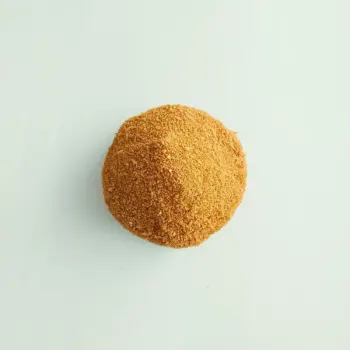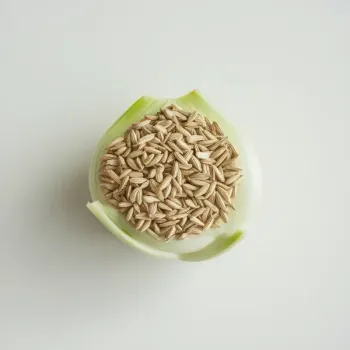Asafoetida and Fennel Seeds are distinct spices used in cooking. Asafoetida, a pungent resin, adds savory depth to dishes, while Fennel Seeds, with a sweet, anise-like flavor, are used for their aromatic qualities and digestive benefits.

Asafoetida, also known as hing, is a resin derived from a species of giant fennel. It has a pungent, sulfurous aroma that mellows into a leek-like flavor when cooked, often used in Indian vegetarian cuisine to add a savory depth.

Fennel Seeds come from the fennel plant and have a sweet, anise-like flavor. They are commonly used in Mediterranean and Indian cuisines, both as a spice and for their digestive benefits.
Asafoetida is known for its strong, almost acrid scent and flavor that requires careful handling, while Fennel Seeds offer a delicate sweetness that can enhance a dish without overpowering it. Asafoetida is typically used in minute quantities, whereas Fennel Seeds can be used more generously. Their origins are similar, but their culinary applications and flavor profiles are distinctively different.

Your ultimate Recipe Box, Meal Planner, and Cooking Class all in one
In lentil soups and dals, a pinch of asafoetida added to the tempering process imparts a savory onion-garlic flavor that enhances the earthiness of the lentils. It's especially popular in dishes like Tadka Dal. Fennel Seeds are often used in lentil dishes such as Italian sausage and lentil stew, where their sweet, aromatic taste complements the robust flavors of the sausage and the heartiness of the lentils.
A small amount of asafoetida in pickles or condiments can mimic the savory notes of onion or garlic, making it a critical ingredient in certain chutneys and achaar. Fennel Seeds are commonly used in sweet and sour pickles, offering a refreshing counterbalance to the tanginess, and are often included in spice mixes for meats and sausages.
While not traditionally used in Western baking, asafoetida can be added to savory bread recipes where a hint of umami is desired. Fennel Seeds are often found in Italian breads like focaccia, where their sweet flavor complements the olive oil and other herbs used in the dough.
Substitution between asafoetida and fennel seeds should be done with caution. Asafoetida can be used as a substitute for fennel seeds when a more pungent, savory note is desired, usually in savory dishes where the anise-like sweetness of fennel seeds is not critical. Conversely, fennel seeds may be used in place of asafoetida to add sweetness and a hint of licorice, though it won't replicate asafoetida's unique umami punch.
Asafoetida and Fennel Seeds offer different nutritional benefits, with asafoetida often used in such small quantities that its nutritional impact is minimal, while fennel seeds are a good source of fiber, vitamins, and minerals.
| Nutrient | Asafoetida ( per teaspoon ) | Fennel Seeds ( per teaspoon ) |
|---|---|---|
| Fiber | Negligible | 0.7g |
| Calories | Negligible | 7 |
| Minerals | Contains trace amounts of iron and calcium | Rich in calcium, magnesium, and potassium |
Asafoetida can be used in sausage making for its savory depth, but it will not provide the same sweet, anise-like flavor as fennel seeds.
They are not directly interchangeable due to their distinct flavors; asafoetida offers a pungent, savory note while fennel seeds add a sweet, aromatic taste.
Both should be stored in airtight containers in a cool, dark place to preserve their flavors.
Asafoetida is known for its digestive properties, while fennel seeds offer dietary fiber, aid digestion, and are thought to have anti-inflammatory effects.
Because of its potent flavor, start with a pinch of asafoetida when substituting for fennel seeds, and adjust according to taste.